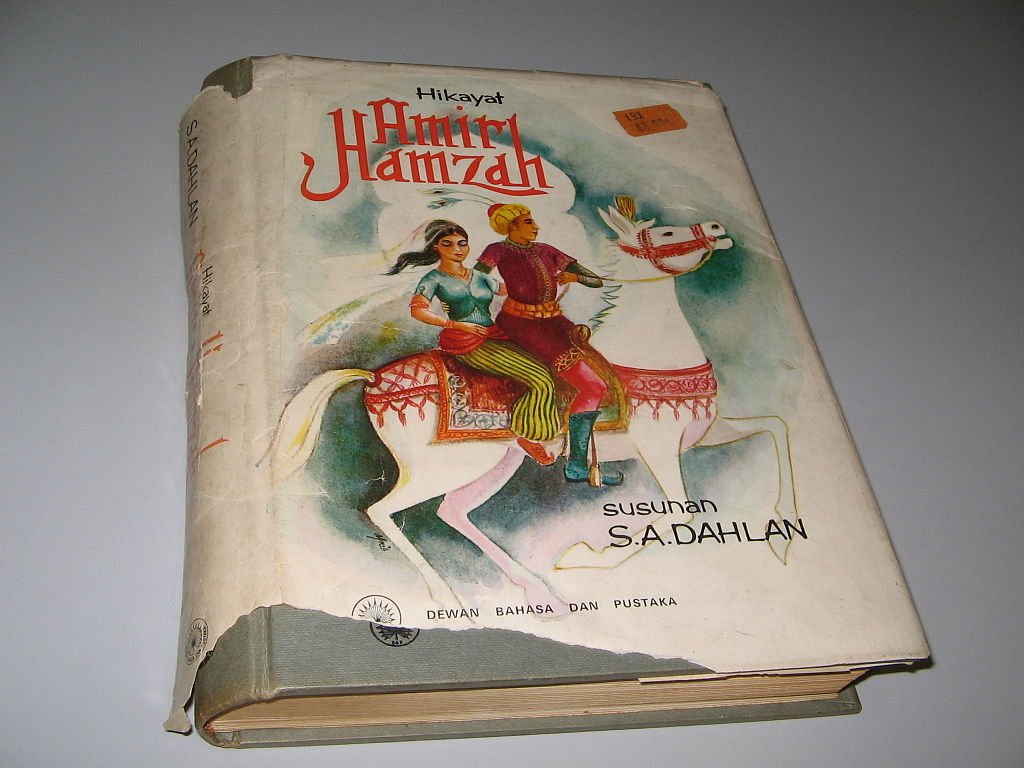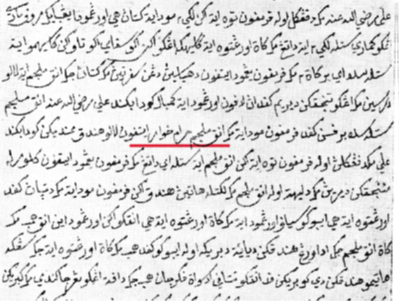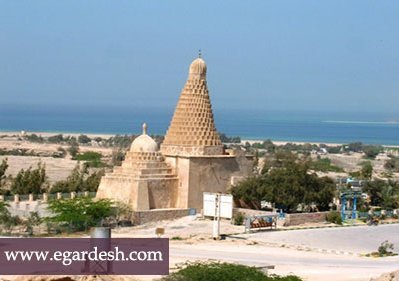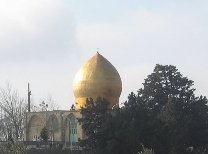Day5/ Persian and Malay Folk Stories (Hikayat)
Muhammad Hanafiyyah from Iran to the Malay-Indonesian World
1/In contrast to the genre of Kitab (religious works and tracts) which were for the purpose of study, Malay Hikayat or folk stories were produced to be recited.
Muhammad Hanafiyyah from Iran to the Malay-Indonesian World
1/In contrast to the genre of Kitab (religious works and tracts) which were for the purpose of study, Malay Hikayat or folk stories were produced to be recited.
2/The Malay genre of hikayat is different from the Arabic one. It is indeed the translation of the Persian "Qissa-yi" or "Dastan-e." Two important hikayat which were translated from Persian and used to be read by Malay-Indonesians for centuries are
3/Hikayat Amir Hamzah (‘the story of Amir Hamzah’) and Hikayat Muhammad Hanafiyya (the story of Muhammad Hanafiyyah), both were already circulated across India. The Hikayat Muhammad Hanafiyyah which is about the killing story of Hasan and Husayn (2nd and 3rd Imams of Shia)
4/ is one of the most important and oldest Islamic stories. Scholars have been investigating the contribution of this story to the Islamization of the Malay World since the turn of the 20th century; they have believed that
5/the more we understand of Hikayat Muhammad Hanafiyyah’s origin, the more we will be able to understand about Islam in the Malay Archipelago. According to the 23rd chapter of the Sejarah Melayu (also known as The Malay Annals),
6/for example, this story was recited by Malaccans at the time of the Portuguese siege of Malacca in 1511.
F. Brakel who was one of the prolific scholars of the Malay-Indonesian Islam, paid particular attention to the Hikayat Muhammad Hanafiyyah and published
F. Brakel who was one of the prolific scholars of the Malay-Indonesian Islam, paid particular attention to the Hikayat Muhammad Hanafiyyah and published
7/a two-volume work about it. He, along with other scholars, believed that this Malay story has been written on the basis of an anonymous and obscure Persian prototype kept in the @britishlibrary . Later on, to follow up on and test some previous scholarly conclusions,
8/I went through the whole literature for a couple of years and realized that the Hikayat Muhammad Hanafiyyah is actually written based on a Persian prototype called Durr al-Majalis by Sayf Zafar Nawbahari Bukhari produced in the 7th century AH/13th AD .
9/Although it is now crystal clear that the Malay Hikayat Muhammad Hanafiyyah is the rendition of the Persian Durr al-Majalis, the Persian terms and phrases are obviously applied in a few Malay versions,
10/which suggest that Malay readers were also able to understand Persian. @BLMalay
As I underlined the following image (in red), the Persian term “haram khvar”
حرام خوار
means "venal or corrupted person" is used as an adjective for Ibn Muljam,
As I underlined the following image (in red), the Persian term “haram khvar”
حرام خوار
means "venal or corrupted person" is used as an adjective for Ibn Muljam,
11/who is, traditionally speaking, known as the killer of Ali, the first Imam of Shia. The underlined phrase says: "maka anak Muljam haram khvar".
12/Also obvious references to Firdowsi can be seen in some Malay versions. In older Malay Hikayat Muhammad Hanafiyyah, Satire of Mahmud of Ghazna is addressed:
از ناپاک زاده مدار امید، که زنگی به شستن نگردد سفید
@readingferdowsi
از ناپاک زاده مدار امید، که زنگی به شستن نگردد سفید
@readingferdowsi
13/Islamic epics present a lion-hearted and chivalric image of Muhammad Hanafiyyah (Hanifah), who is displayed as the Imam of his age as well as a messiah. Traces of stories (Pers. Qiṣaṣ va ḥikāyāt) dedicated to him can be found in various corners of Western Asia,
14/particularly in the Middle East, in places such as Kharg Island, in Bushehr province or Guilan of Iran, where a tomb ascribed to him (Buqʿa-yi Mīr Muhammad-i Hanafiyyah and Imāmzāda-yi Muhammad-i Hanafiyyah, respectively) is located.
15/ It is said that sailors from South Asia used to visit his tomb on Kharg Island in the Persian Gulf as well. The messianic facet of Muḥammad Hanafiyyah has been underscored for many years in the Bamyan Valley of northern Afghanistan, @AfghanHistorian
16/where an area is dedicated to the “dragon slayer” Ḥazrat-i ʿAlī. Local people believed that Emir (Shahzāda) Hanafiyya, the son of Ali, is waiting in an underground passageway to reappear and fight for peace, along with his horse and his beloved wife, Bibi Hanifah.
17/Indeed, the legends of this region present Muhammad Hanafiyya as al-Mahdī al-muntazar (“The Awaited Mahdi”), which is an important principle of Twelver Shi& #39;ism.
18/Calling Muhammad Hanafiyya the Mahdi “was initiated by some Shi‘ite sects which claimed that he had not died but was only hiding in mountains and which expected his ‘second coming’ before long.”
19/Perhaps unsurprisingly, every author or copyist of the saga of Muhammad Hanafiyya tried to indigenize and present him as one of his own people (e.g., a South Asian or Indian Muslim, a Malay Muslim). @ifalatas
20/As such, one Persian version says that the servant of Husayn, upon leaving Medina, decided to visit Muḥammad-i Ḥanīfah, to inform him of the death of his brother in Karbala. The servant then travelled for three months over a considerable distance
21/before arriving at Muhammad Hanifah’s headquarters in the city of Bamyan; In another Persian version, in order to visit “The Hero of the Religion, the Leader of the Brave People”, i.e. Imām Muhammad-i Hanifah, the servant sets off for the city of Banil,
22/which refers to the region of Banil Kalle in Pakhtunkhwa, which had been conquered earlier by the Ghaznavids.These points clearly demonstrate the resemblance of the Malay hikayat of Muhammad Hanafiyya with those of Central and South Asia, and particularly of the Bamyan valley
23/. Furthermore, another Malay version of this story, MS 12377, preserved in the @britishlibrary, suggests the headquarters of Muhammad Hanafiyyah is not, unlike other versions, Boeniara but another city, one derived from the letters b-n-t-y-a-r:
24/"pergi membawa surat kepada saudaranya ke benua b-n-t-y-a-r"
Whether it reads as Bentara,Bentiar or Bentyar,it is clear that the scribe of this version of the Hikayat Muhammad Hanafiyyah did not identify Boeniara as the headquarters of Muḥammad Ḥanafiyya.
~Majid
Whether it reads as Bentara,Bentiar or Bentyar,it is clear that the scribe of this version of the Hikayat Muhammad Hanafiyyah did not identify Boeniara as the headquarters of Muḥammad Ḥanafiyya.
~Majid

 Read on Twitter
Read on Twitter






